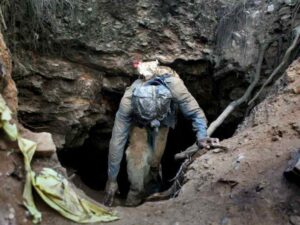Johannesburg – This year could see the country reach a record high in power cuts. As coal stations begin to go offline, many have called for Eskom to move to renewable energy. While that seems like a good idea, Eskom is far from ready to implement it.
At one point Eskom was a well-built, well-run entity. For the past three years however, it has only been getting worse. According to Crown Prince Adil Nchabeleng, energy expert, the main problem Eskom is facing is generating electricity.
“The major crisis right now is sitting at generation. Most of the generation plants are sitting at less than optimum levels. Most of them are operating below 50% in terms of energy availability capacity. This means most of the units are non-functional and they are in the breaking stages.”
The power stations with low levels of electricity production can be refurbished. The lack of action to do this and extend their life leads Nchabeleng to believe that one of two things is happening.
“Either there is a deliberate move to totally disrupt the provision of power in South Africa or there is a deliberate move to say that South Africa’s capacity to self-generate its own electricity is declining. This could be to introduce new suppliers.”
Allowing power stations to shut down while they still have life in them shows the inefficiency of Eskom management. Nchabeleng lays the blame for this solely at the feet of André de Ruyter. Instead of focusing on repairing Eskom, he has gone all over the world trying to convince people that Eskom should shift from coal to renewable resources, said Nchabeleng.
Shireen Abu Akleh murder was a message from the Israeli government
Eskom moving to renewable energy is not a smart move
The move to go from coal to renewable energy is seen as a very disruptive one. Renewable energy relies on the sun and wind. When both of these are unavailable, power stations will have to ramp up their production capacity. When the sun and wind are available then power stations will have to ramp down their production capacity to allow for this extra electricity to flow into the power grid properly. This process of increasing and decreasing could lead to damaging the power grid, said Nchabeleng. This new strategy is slowly tearing Eskom apart.
“Eskom is struggling a lot because now there is a different strategic approach that is tearing up the company. We want to introduce new alternatives on one side. On the other we have these power plants that are breaking down. There is no focus on maintenance, no focus on producing electricity that is required. The current programme to destroy power plants is deliberate and has no mandate whatsoever.”
Eskom should have rather focused on increasing the lifespan of the current power stations and maintaining them. In this way they could have better focused on how to move over to renewable energy while having a stable output of electricity, said Nchabeleng.
Eskom’s reliance on coal power stations
At the moment coal power stations generate the bulk of electricity. According to Nchabeleng, coal power stations, when operating at full capacity, push out around 40 000 megawatts of electricity. The alternatives which are gas turbines, hydro, solar energy, wind energy, nuclear electricity and landfill gas together push out a maximum of 13 624 megawatts. Even with coal power stations operating below optimal levels, they far exceed what the alternatives can push out. Of the 15 or so power stations that are currently running, none are running at optimal levels.
Poor planning leads Eskom to burning diesel and its cash reserves
The Russia nuclear deal would have been less costly
In 2014 former president Jacob Zuma signed a deal with Russian agency Rosatom to provide South Africa with nuclear power stations. It was to be Zuma’s lasting legacy. The deal was set aside by the Western Cape High Court in 2017 and declared invalid and unlawful. However, Nchabeleng is of the opinion that this was the wrong move, and the High Court should have never intervened in matters it knew little of.
“The High Court doesn’t understand the fundamentals of energy and nuclear. South Africa made the biggest mistake. By now they should have built those 10 000 megawatts power stations. Between the time this deal started to today, we would have already had some level of energy capacity coming out of nuclear.”
The deal would have seen South Africa spending around R1 trillion for the nuclear power stations. This was a major concern at the time. For Nchabeleng it would have been worth it as Eskom has spent far more to get little to no electricity.
“The amount of money, even if it was a trillion rand, would have been nothing in comparison to the amount of money wasted on Independent Power Providers (IPPs) which is right now at over R1.4 trillion spent. Eskom has already paid over R300 billion today to IPPs that are not even producing. If you start comparing apples and apples, you’ll start seeing the fundamentals are not correct.”
The growth of the economy is declining because of Eskom’s failure to provide the country with stable electricity. Whether the nuclear deal could have provided us with enough electricity to avoid load shedding will never be known. What is known is that had the current coal power stations been maintained there would be no need for load shedding. It is now up to Eskom to try and rectify its mistake as South Africa tries to claw its way back to having a growing and functioning economy. Inayet Wadee and Crown Prince Adil Nchabeleng discuss Eskom’s failure to provide electricity.

